Arts & Culture
Artist Dan Van Allen Lives In His Own Personal Museum
Van Allen—perhaps the most interesting man in Baltimore—shows us around his two connecting rowhomes in Sowebo.
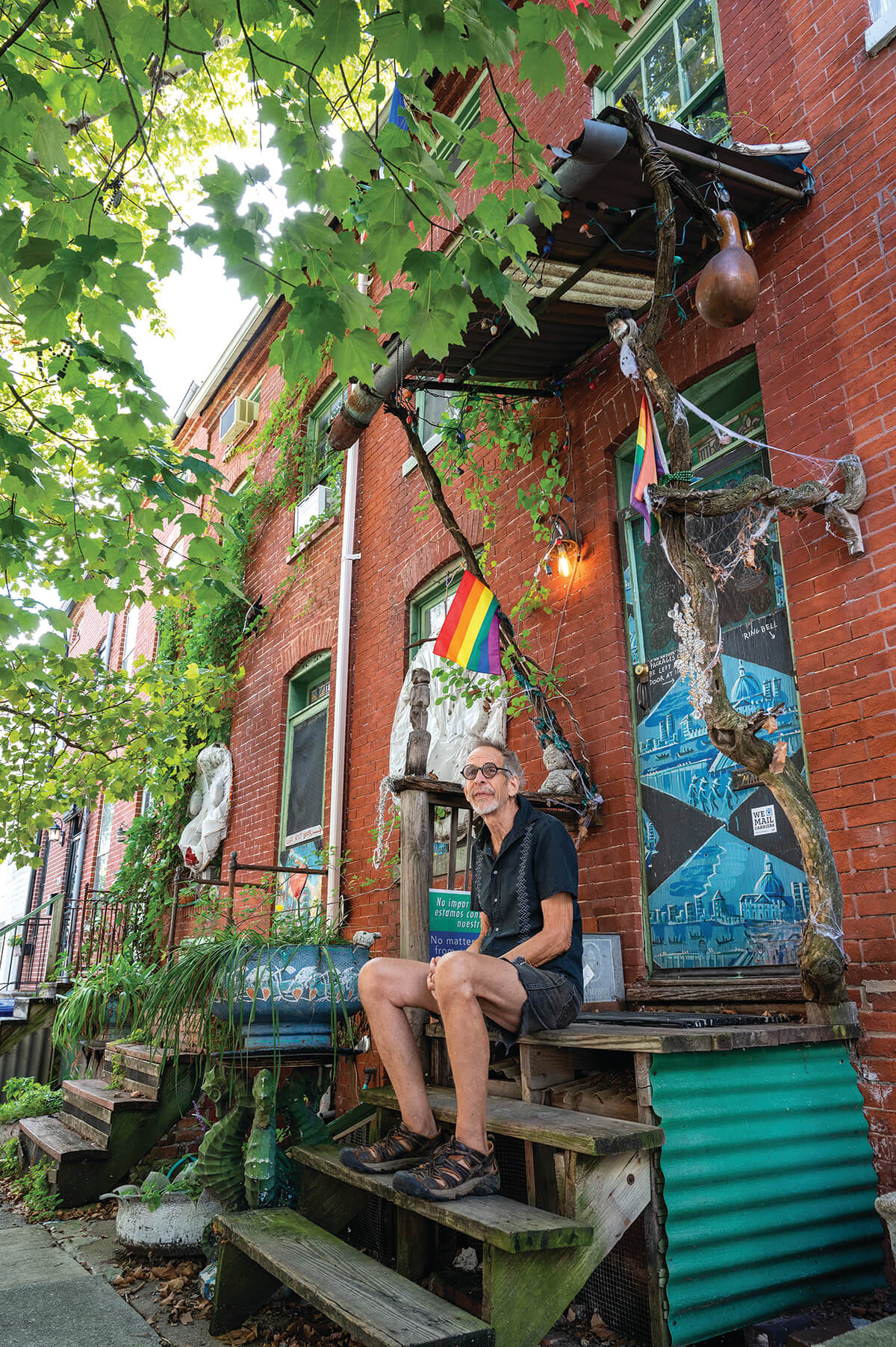
There is an instant shock when you first step foot in Daniel Van Allen’s home, as your eyes decide where to land first.
There are just so many options. And then Van Allen, 70, starts talking and doesn’t stop for three and a half hours, until you find yourself back on the street, your tastebuds still singing from the pawpaws and homemade absinthe you’ve just consumed in his basement kitchen. It’s a wild, slightly disorienting, but amazing ride.
“I’m a Renaissance man,” says Van Allen, the preservationist, activist, outsider artist, and forager. He’s also a founder of the Arabber Preservation Society and a boater on his hand-carved canoes.
His two connecting rowhomes in Sowebo, built in 1850, contain 19 rooms, each with a different theme—Egyptian room, Mayan room, coconut bathroom, voodoo room, walnut room, Hindu room. It’s Architectural Digest meets the American Visionary Art Museum, and Van Allen is curator, docent, archivist, and tour guide. (He does in fact give regular tours of his home to MICA students.)
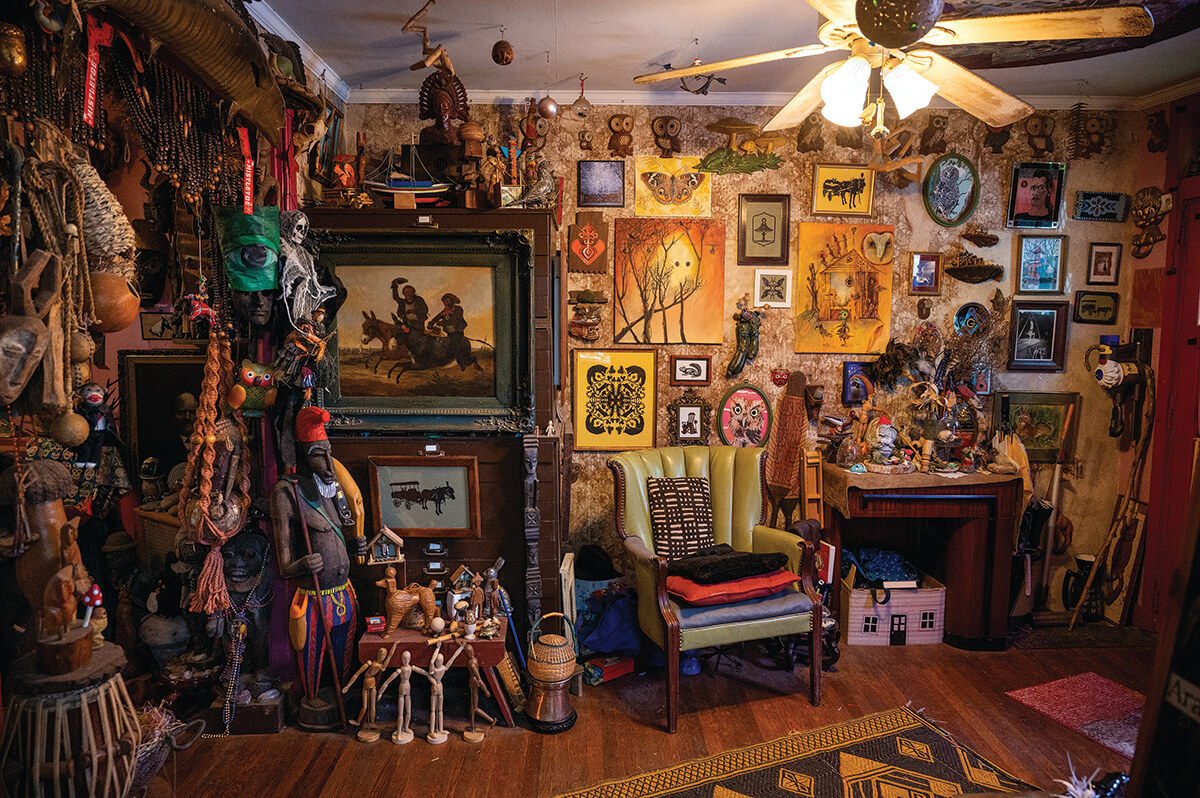
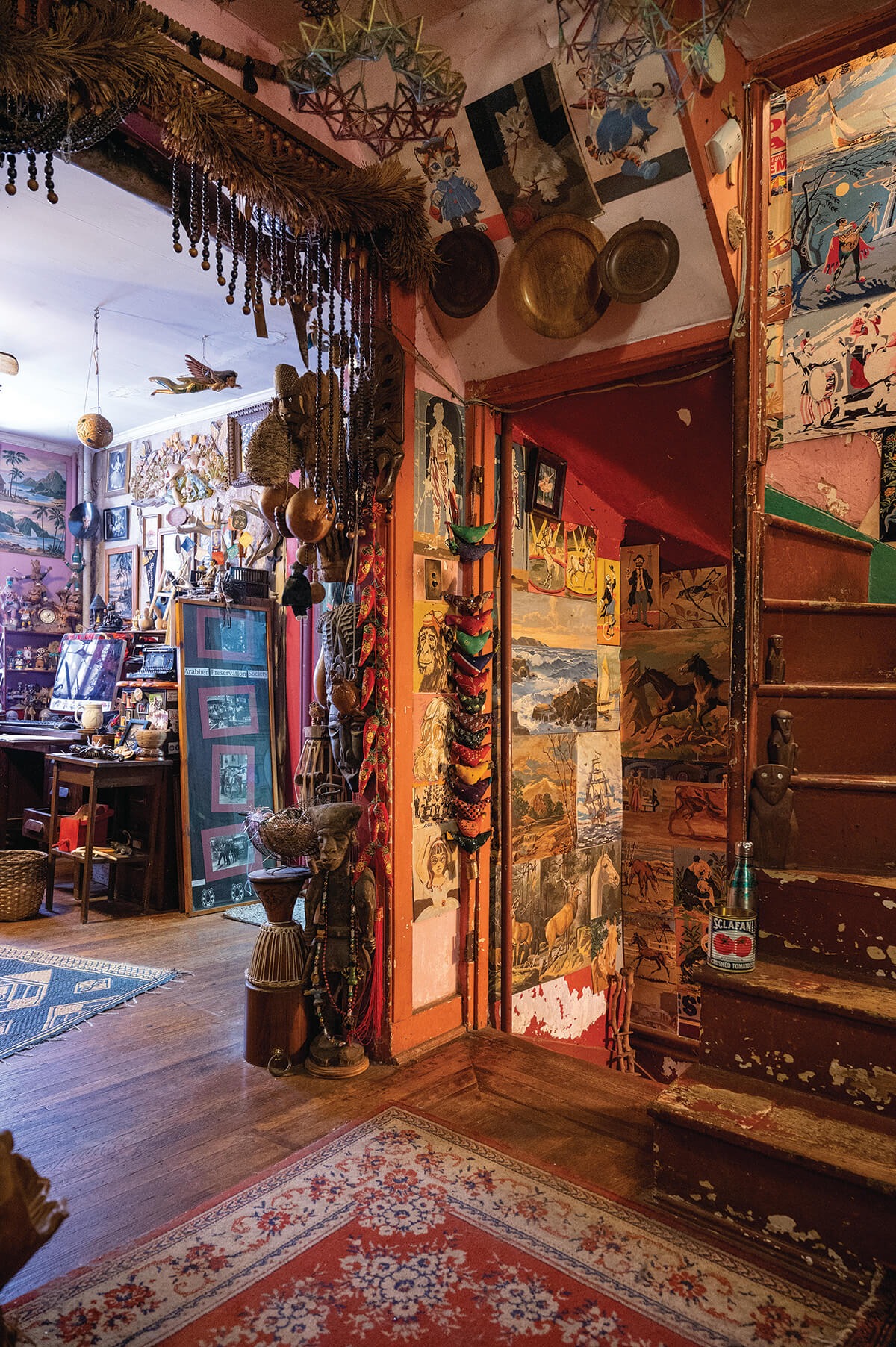
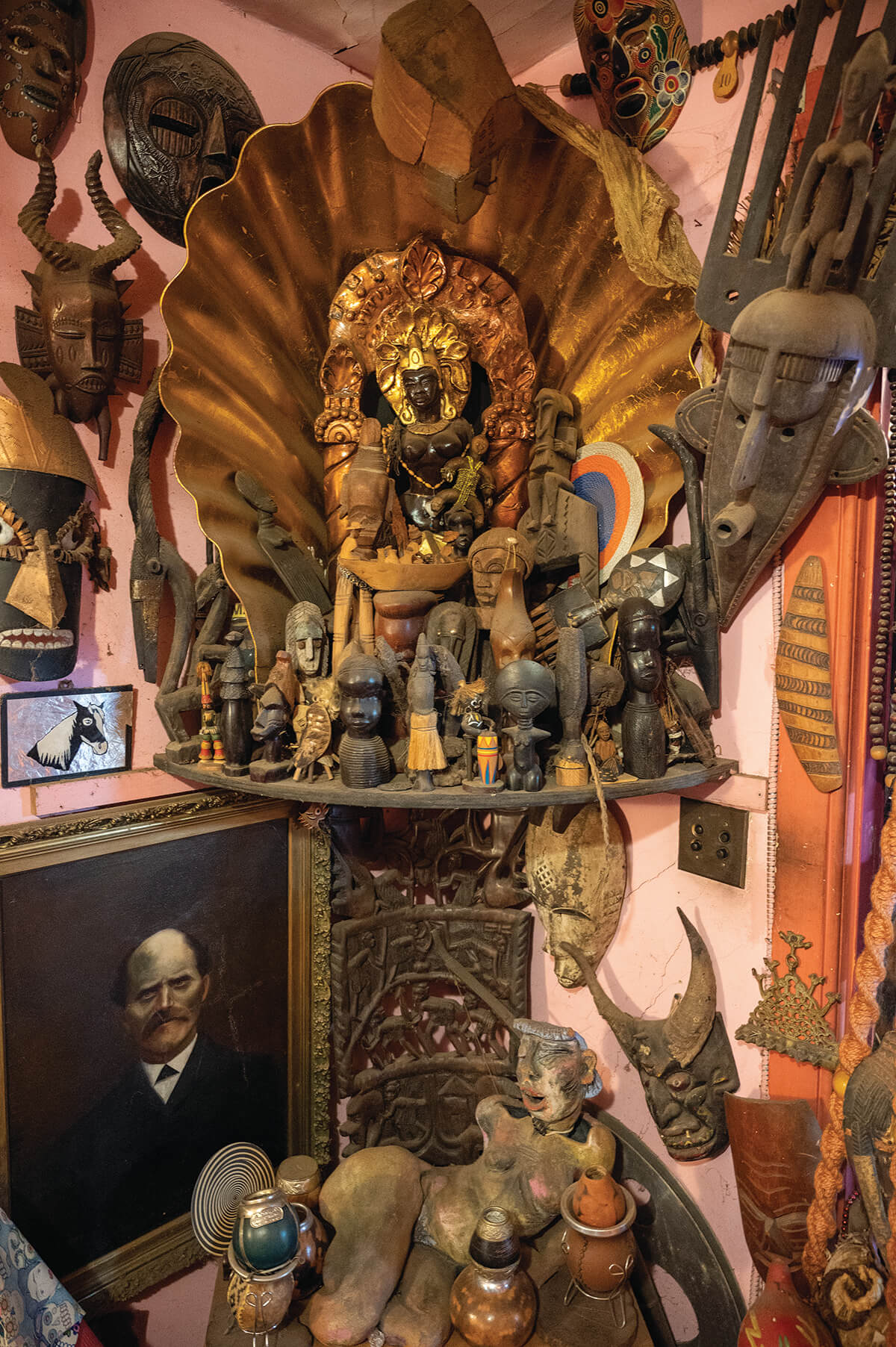
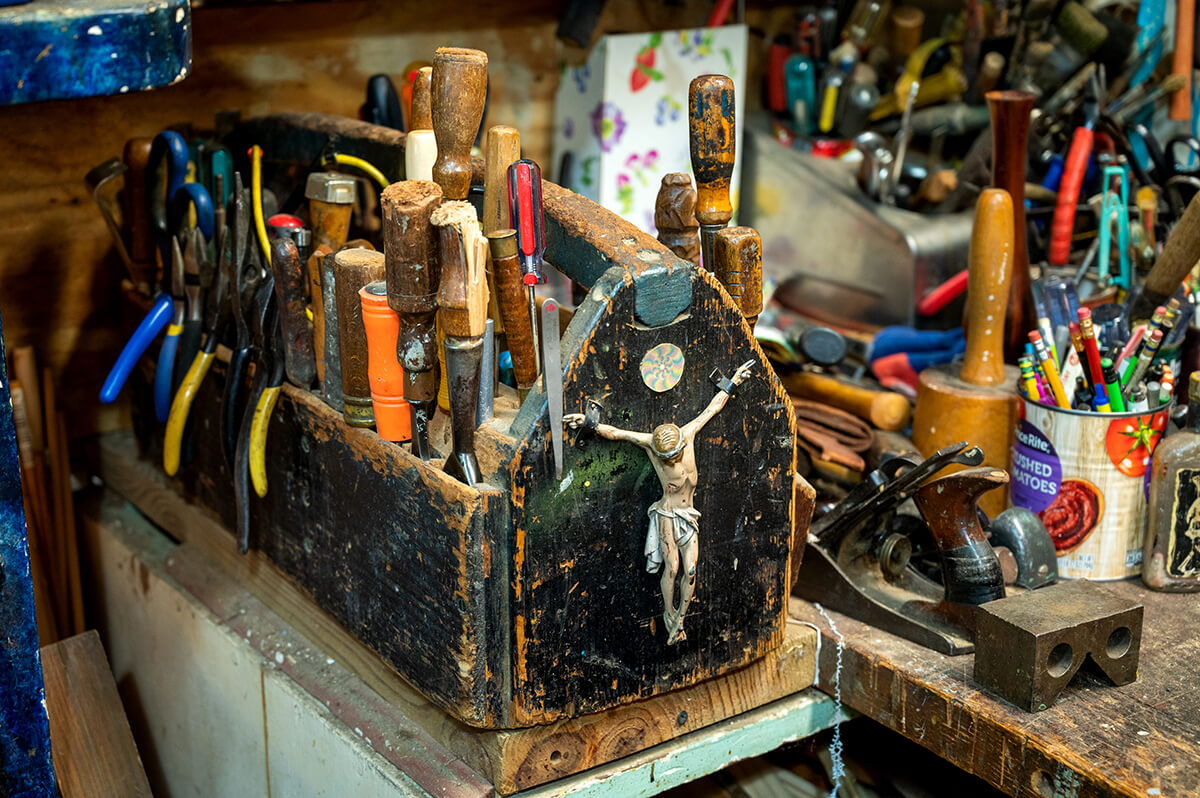
There is no interviewing Van Allen. There is listening and absorbing and delighting. He knows so much about so much: Chinese gods, antlers, paint-by-numbers, gourds, the Baroque style, straw man art, Fèt Gede (Haiti’s Day of the Dead), furniture restoration, community gardens, the flute-playing god Kokopelli, the underground arts scene, and yoga.
So many of his stories start with brilliant non sequiturs: “I was on stilts” or “I used to keep turtles in here in the winter” or “this was the gourd-atorium because I had all my gourds up here” or “we had house rabbits—five or six of them” or “we used to do guerilla tree planting.”
Van Allen was born in Alexandria, Virginia, but spent most of his childhood in Seabrook, Maryland. “I grew up in a mid-century modern house. [My parents] were of the generation that wanted everything sleek and modern,” he says. “We were the generation that made fun of it.”
“This would be shocking, of course,” he says, looking around his home. “All the clutter. The decorations.”
But later, when asked about using the word clutter, he pushes back. “We keep it from being cluttered. You can see a difference between a museum—our house is more like a museum—and an actual hoarder’s house,” he says.
His connection to his collections isn’t a monetary one—most items were purchased for $5 or less at flea markets or gifted to him—but one of inspiration. “I don’t really value material things. I value art.”
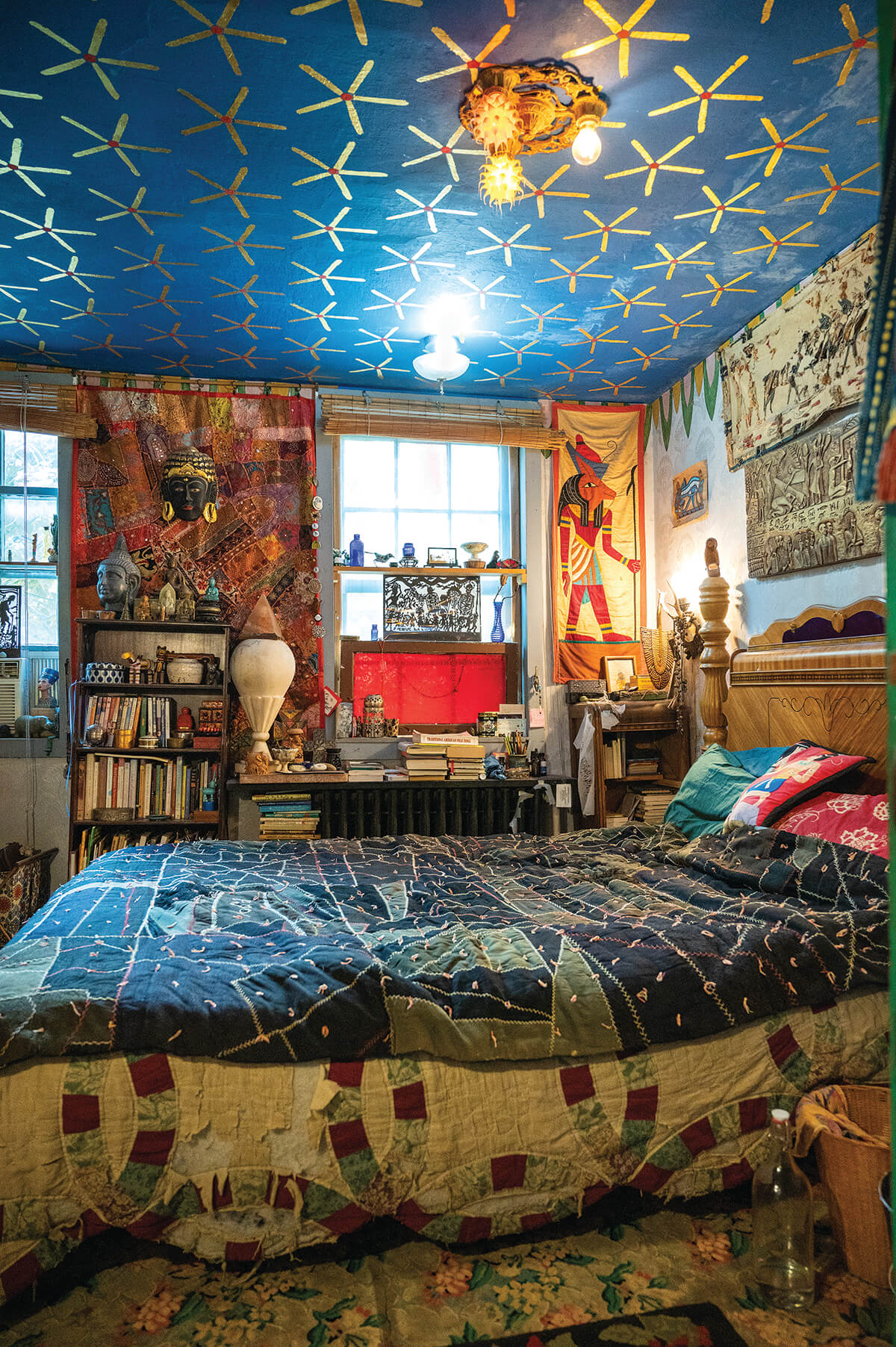
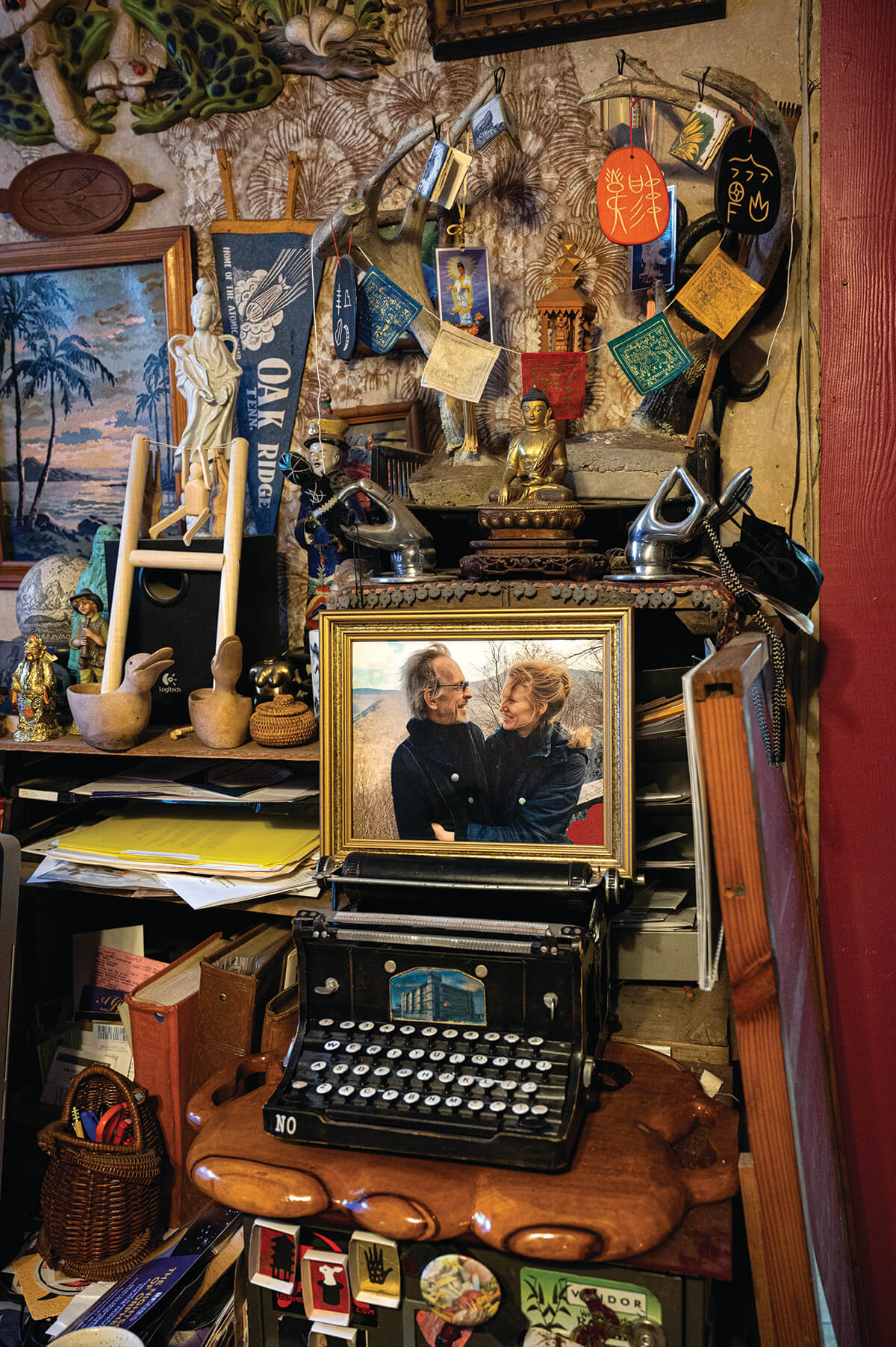
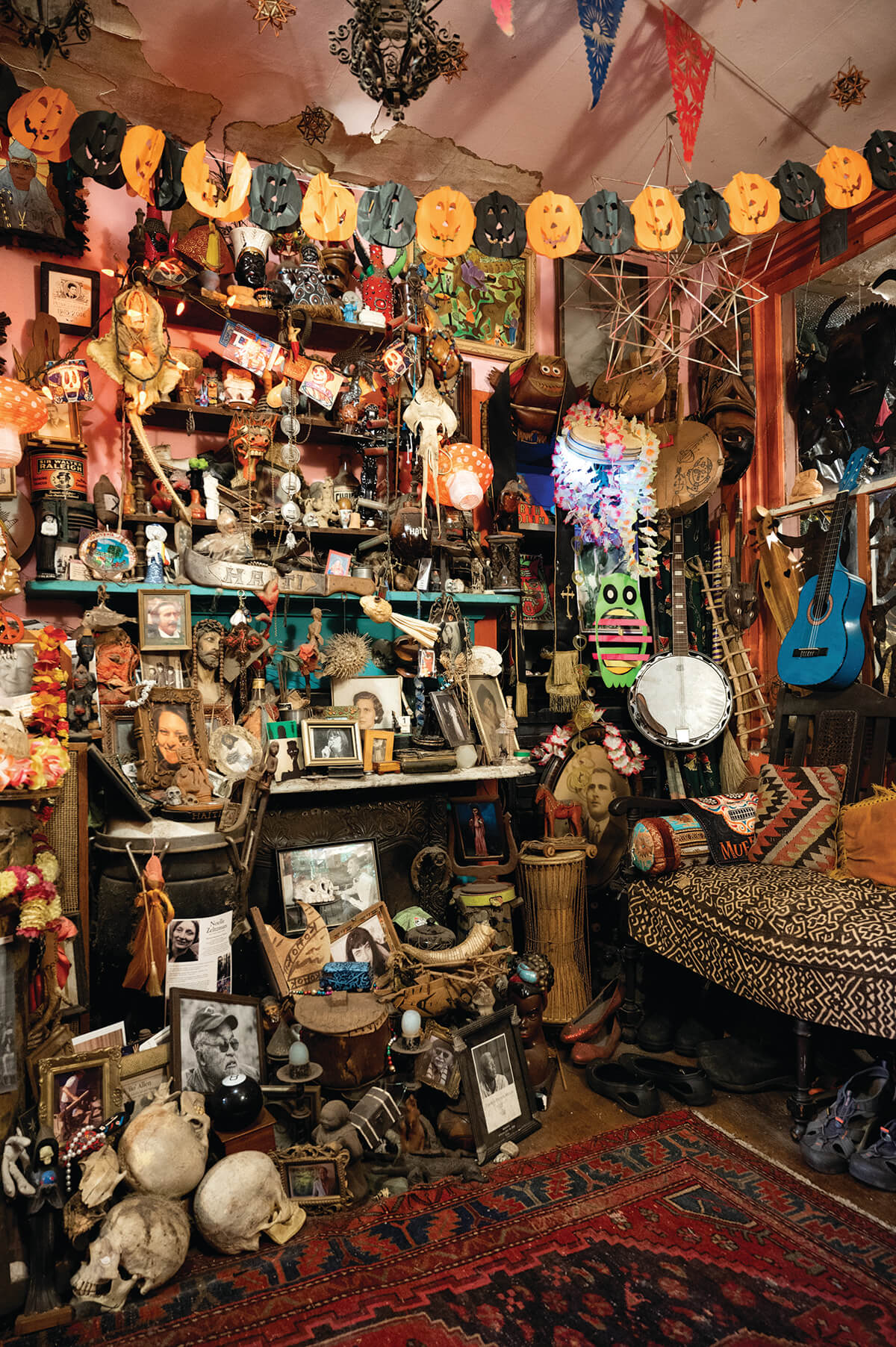
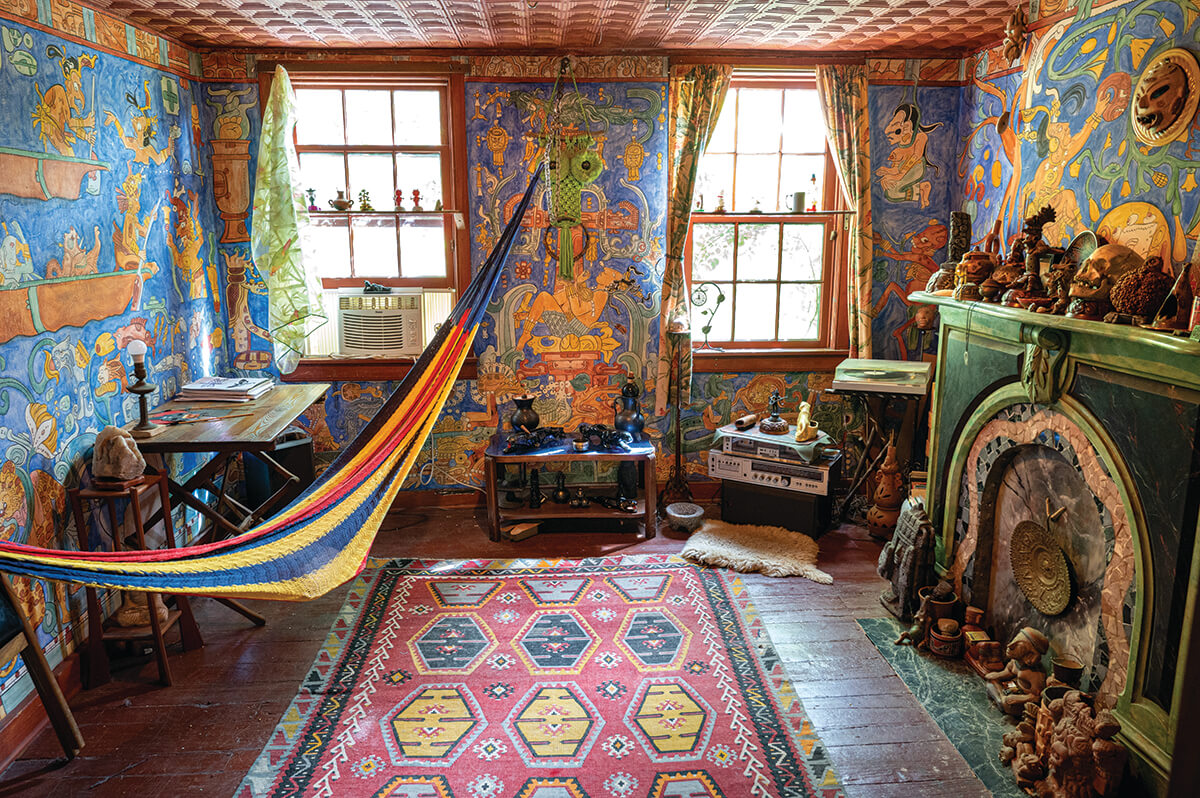
That includes the work of his partner, Katherine Fahey, a crankie artist, who lives with Van Allen. “I’d never known anyone quite like Dan,” she says, tucked on a couch in the voodoo room. The two—clearly smitten with each other—married in early October in Leakin Park.
Fahey says she’s still surprised by something in the house almost every day. “I’ll say, ‘Dan, was that there before?’ and he’s like, ‘Yes, that’s been there since you moved in.’ But he knows where everything is. There was a tiny little object missing over there,” she says, pointing to a corner, laughing. “And Dan was like, ‘Where’s that thing?’”
But judging by Fahey’s growing cricket cage collection, she’s leaning into the lifestyle hard. It’s the Van Allen spell. His gentle way of speaking, the Harry Potter glasses, the occasional top hat. His closet full of leftovers from the 14Karat Cabaret and other festivals. (He ran the Sowebo Arts & Music Festival for six years and volunteered for 18.) It’s the art car parked out back—a painted Volkswagen Transporter—and his deep love for eccentric Baltimore.
“I could live anywhere in the world I want…but I love Baltimore,” he says. “I traveled enough. I really enjoy the neighborhood. Now they’re calling me ‘sir.’”
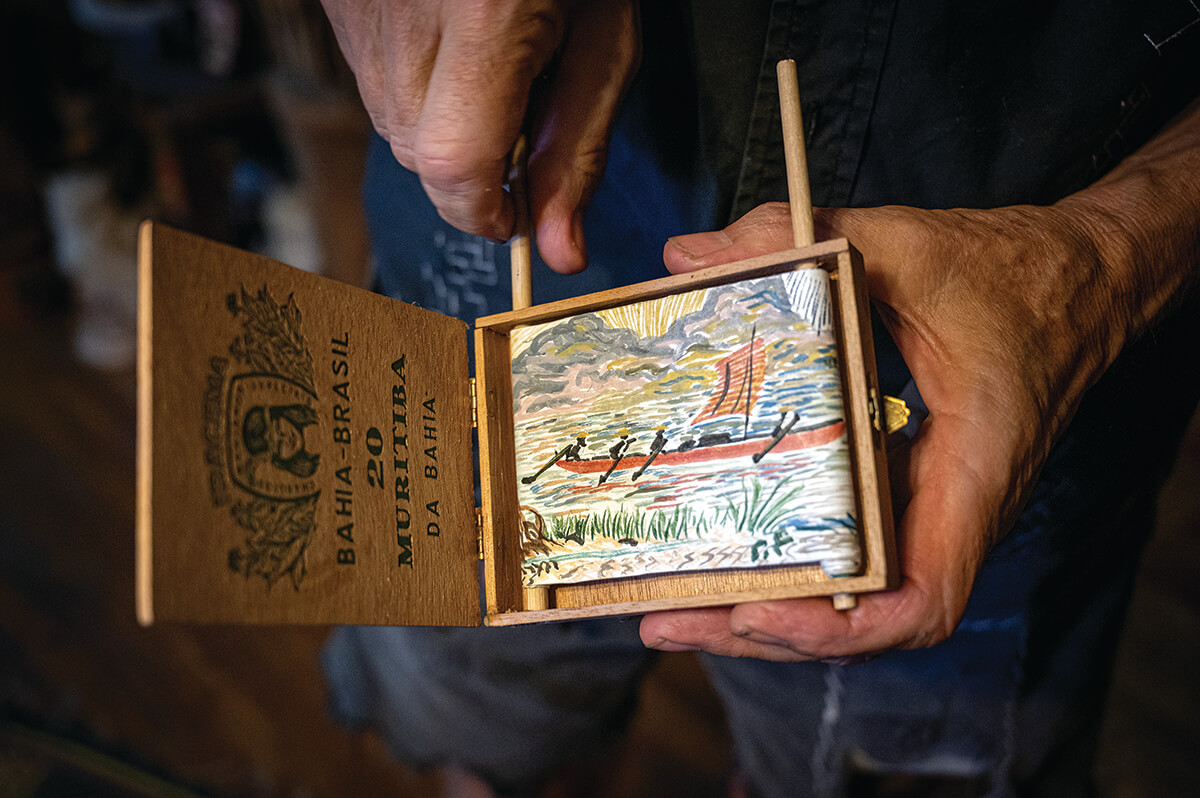
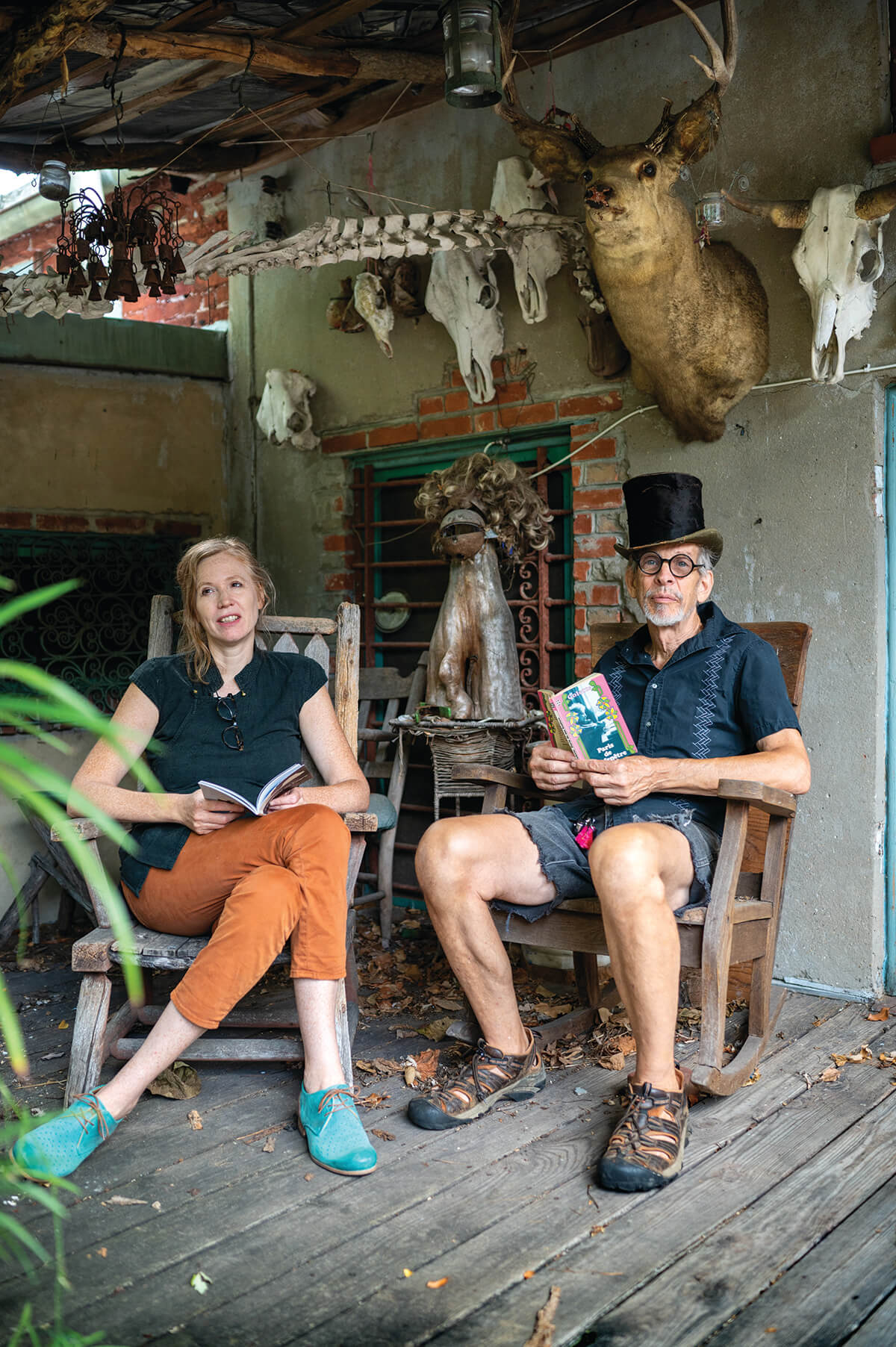
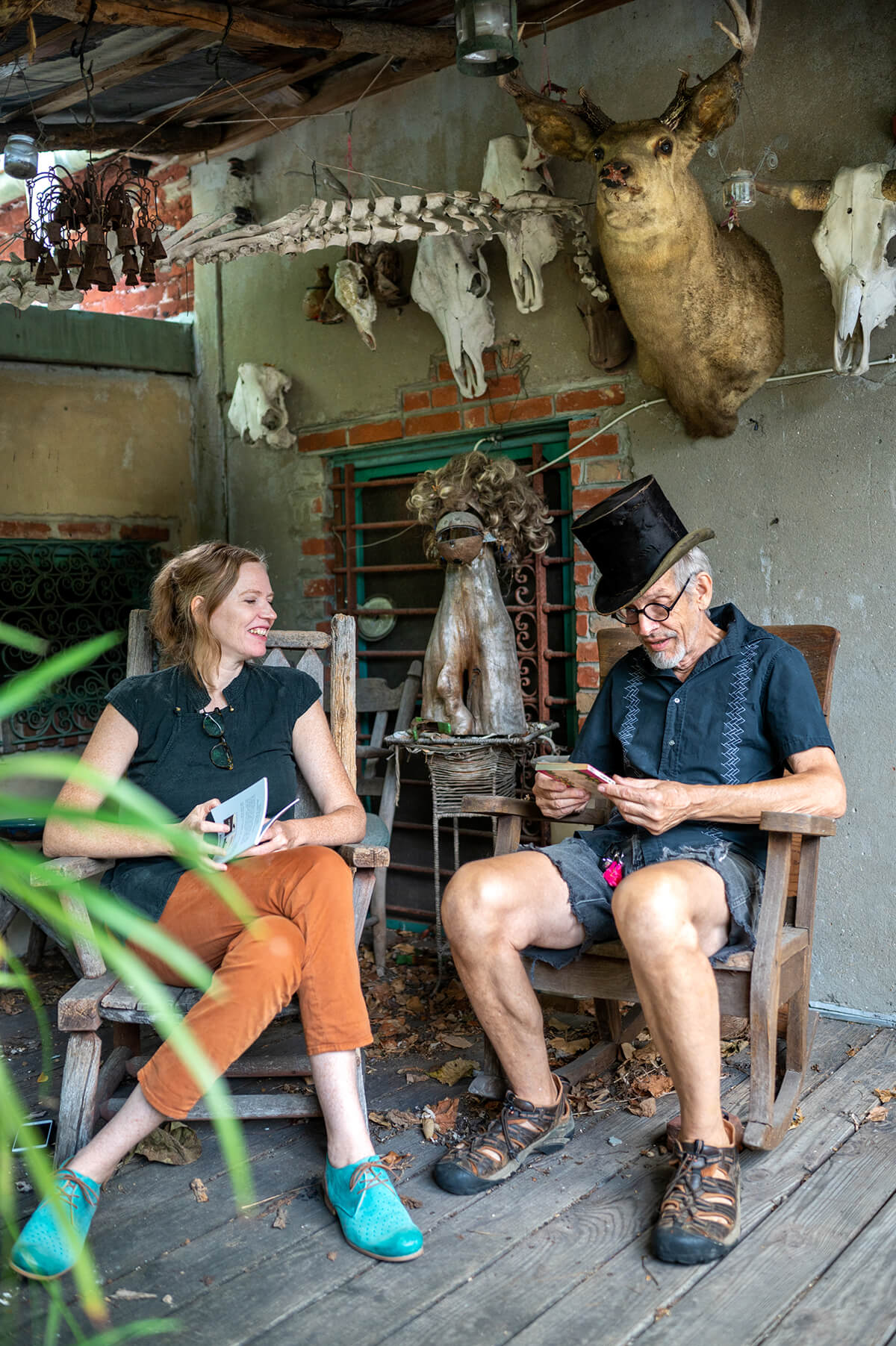
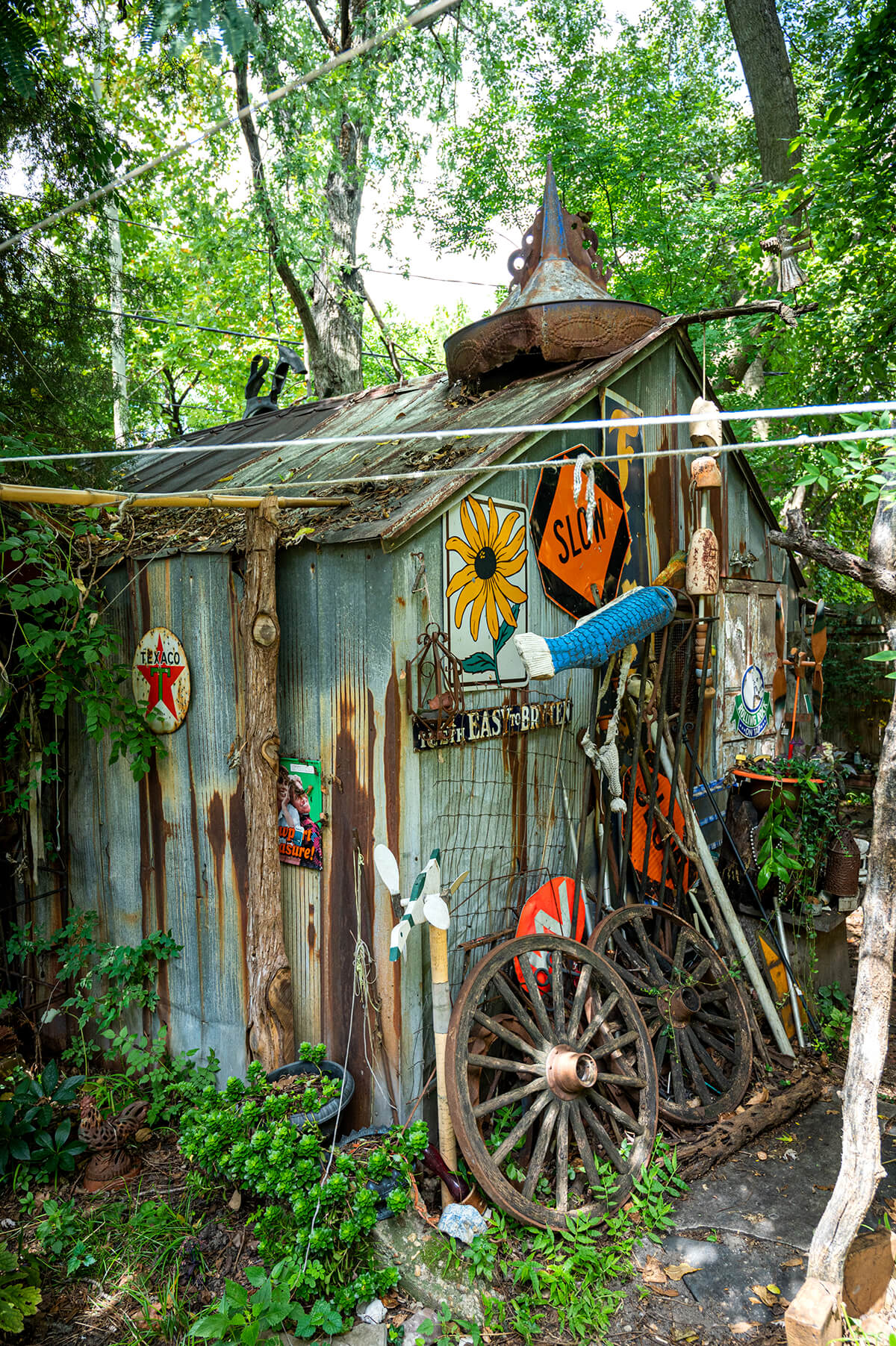
And the elder statesman of Baltimore’s underground art scene seems perfectly content with that title. We’re standing at the stove that’s been in the house since the 1920s—a Magic Chef gas range—and he’s making coffee with his Bialetti stovetop espresso maker. He must relight the pilot light each time he uses the Magic Chef—but it works like a charm and soon the java is percolating.
“This is the watermelon cabinet,” says Van Allen, pointing to the pantry painted to look like a watermelon rind. “Behind you is the snake altar.” I barely have time to ask, “What’s a snake altar?” before we’re heading outside to feed the chickens.
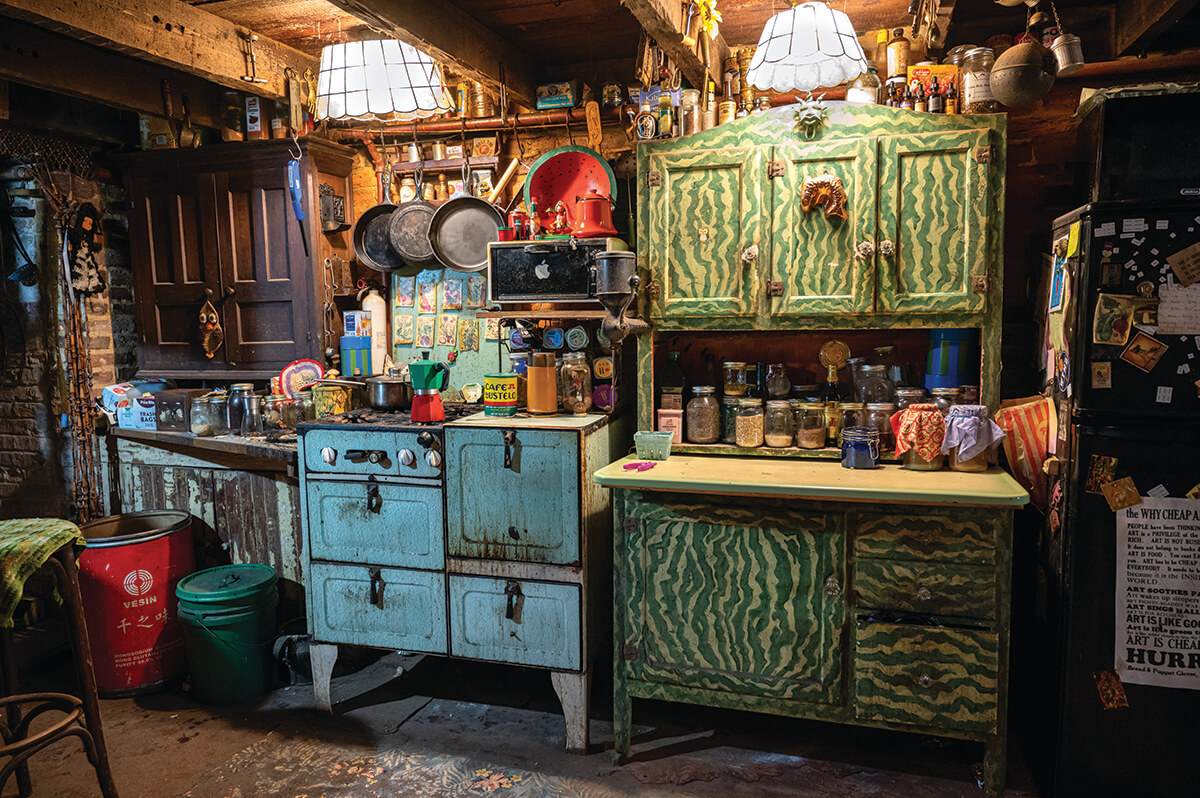
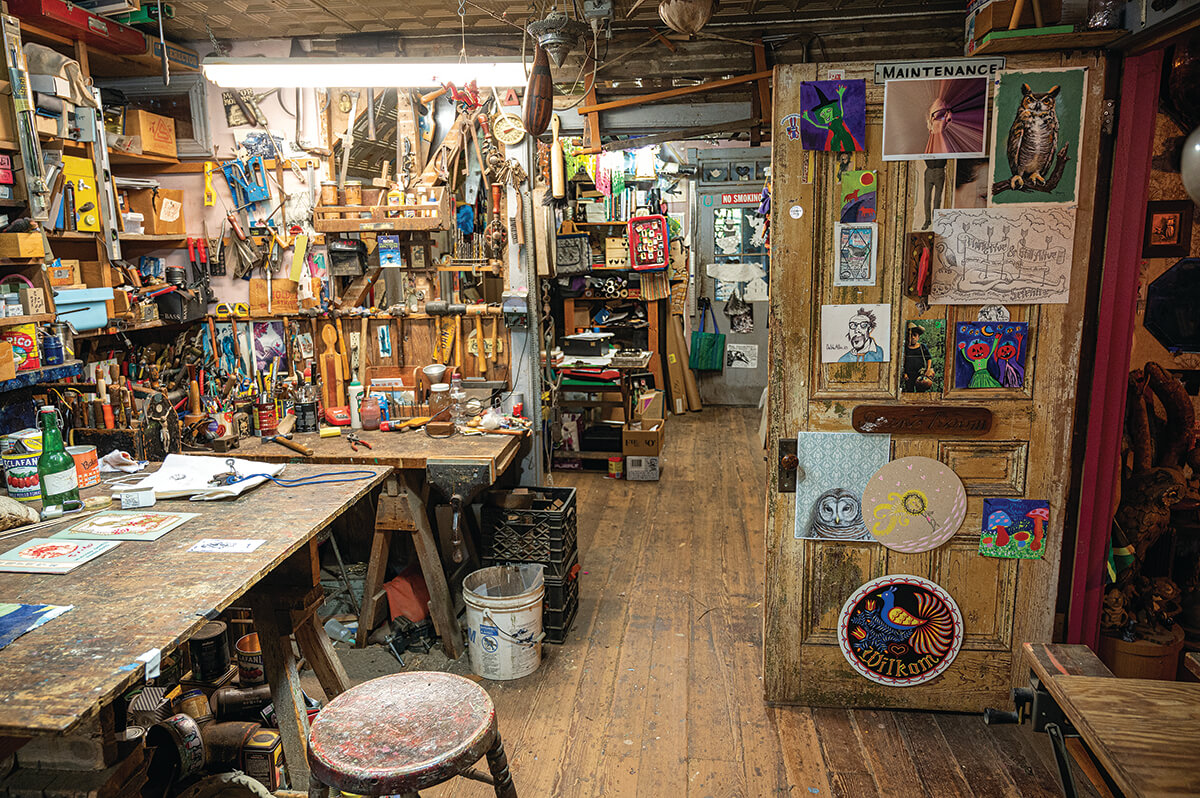
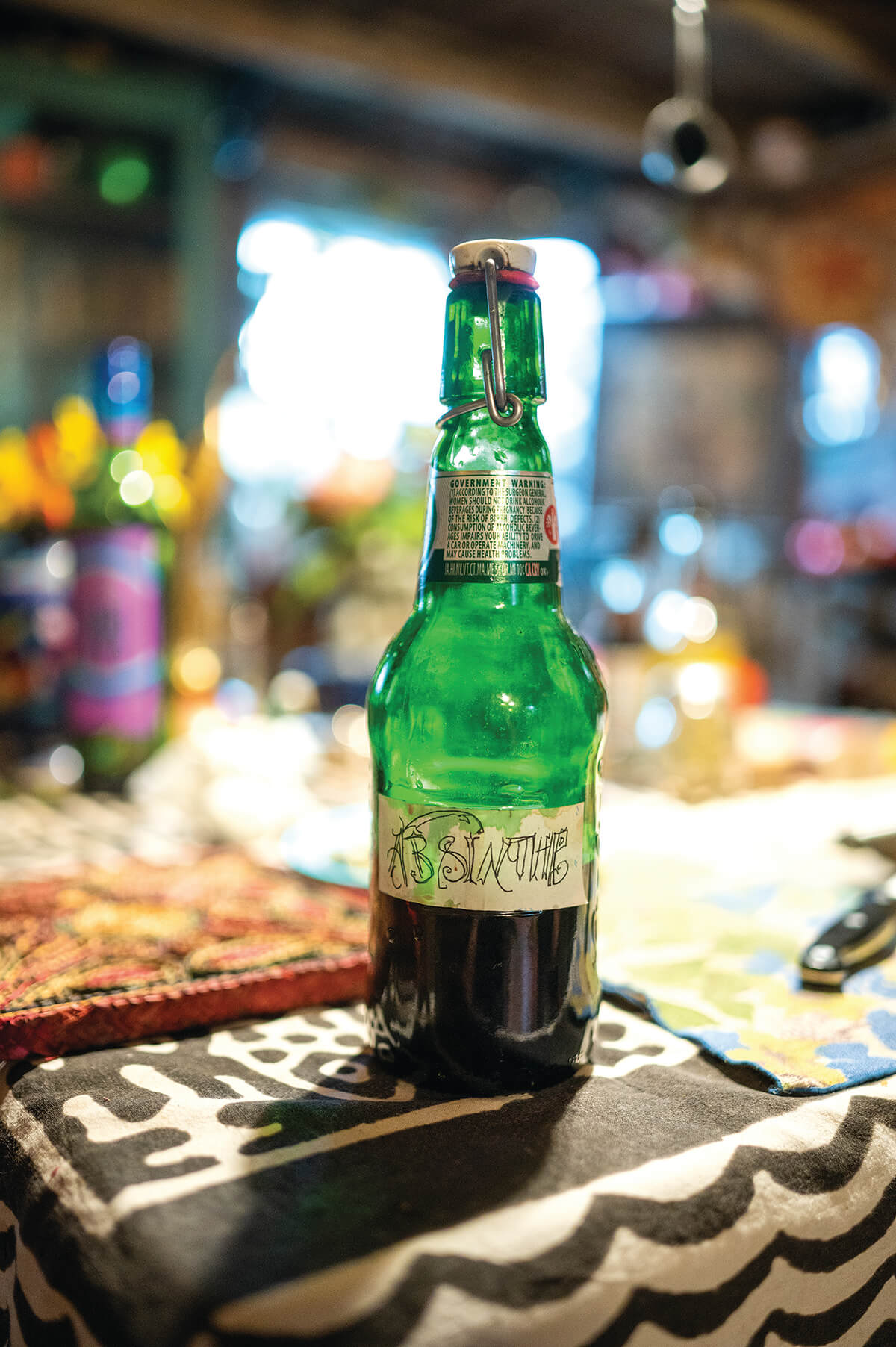
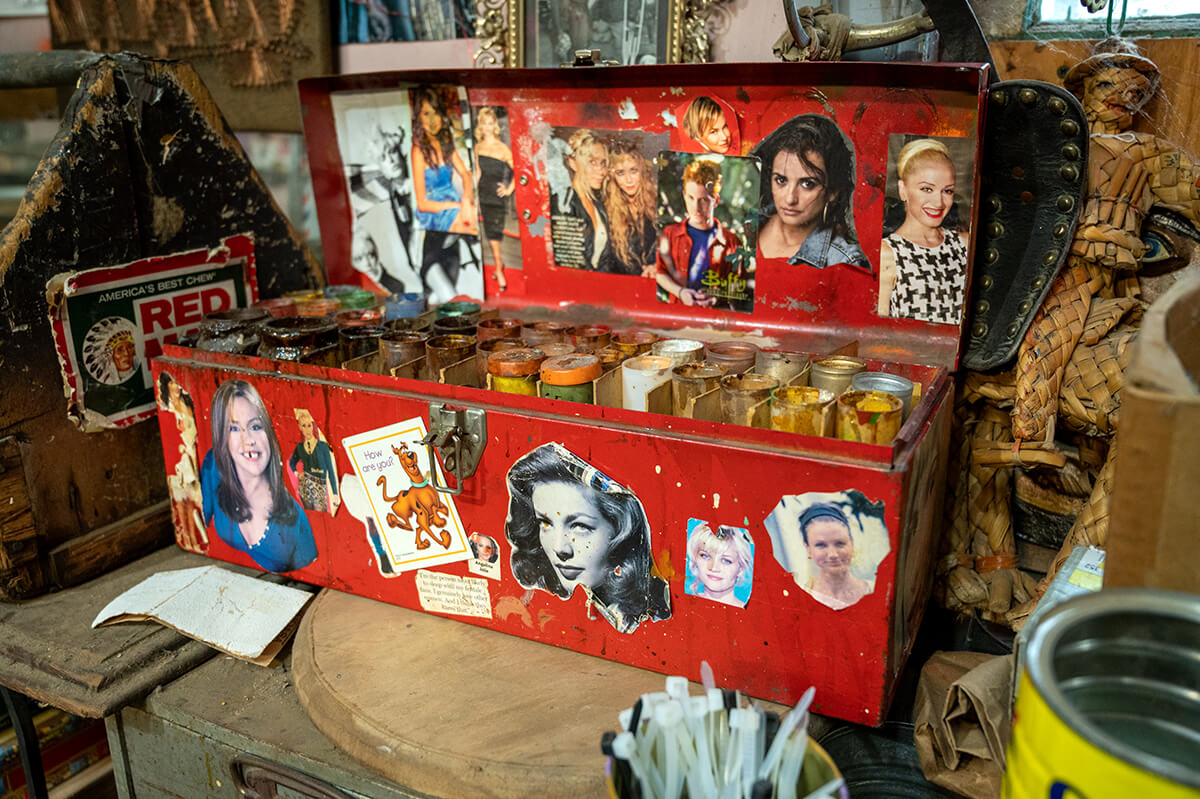
Later I tell him, “You have a house of stories.”
“There’s many stories,” agrees Van Allen, gesturing to his voodoo altar. “When I first started that, I was like, this is a great place to put little souvenirs and things that have meaning. But the whole house has become a voodoo altar.”